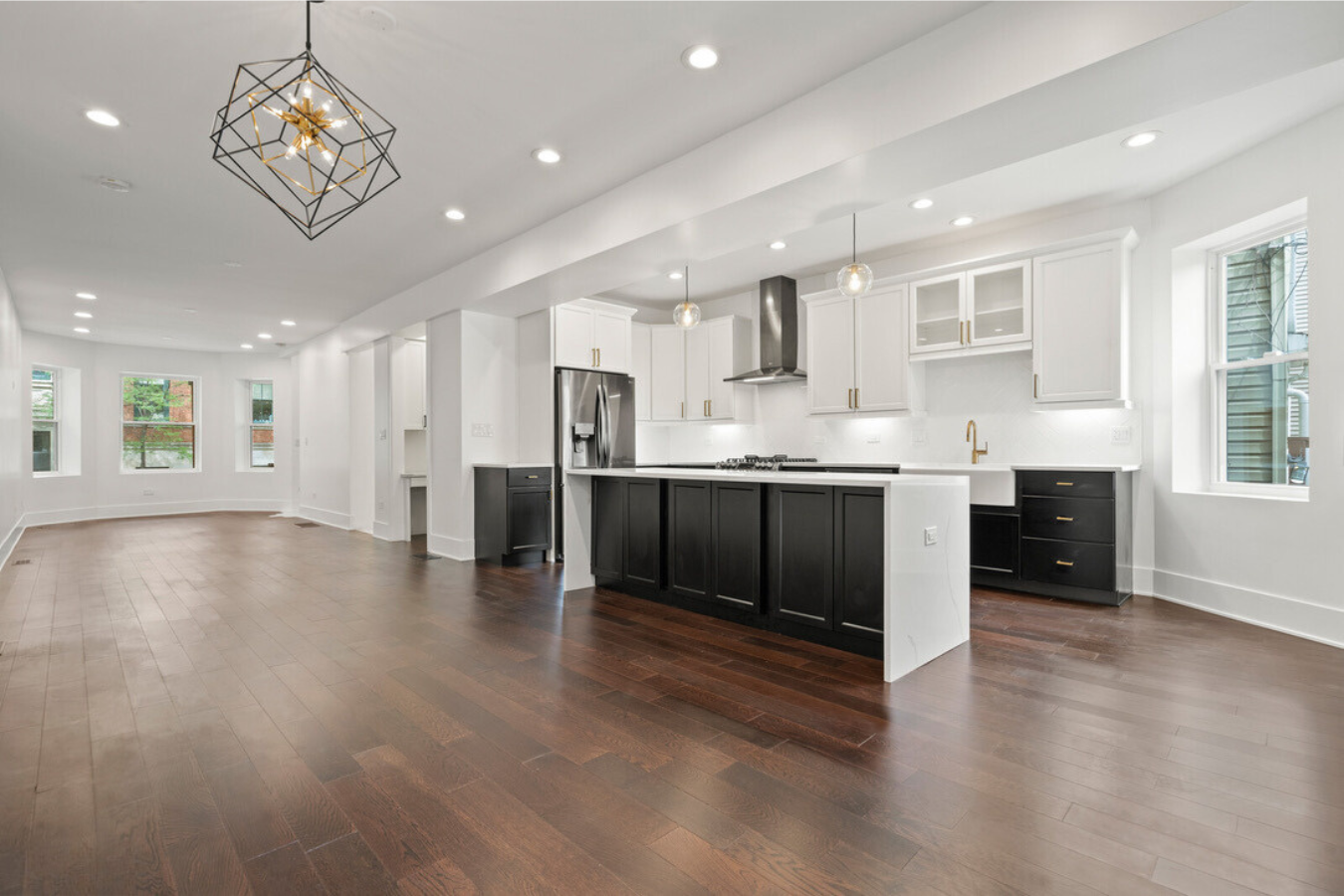
How Do DIY Methods Differ From Professional Services for Home Remodels?
When planning a home remodel, you may find yourself debating whether to tackle the project on your own or to hire professional contractors. DIY home remodeling can often seem appealing due to its potential cost savings and the satisfaction of a personal accomplishment. However, professional services, such as pegasus builds, provide specialized expertise, efficient project management, guaranteed quality, adherence to building codes, and enhanced safety measures. In this article, you’ll learn how to differentiate these two approaches so you can make the most informed decision for your remodeling project. Experts at Pegasus Construction (pegasus builds) understand the challenges homeowners face during remodeling and can offer transparent, expert advice to guide your project from concept to completion.
Research shows that DIY projects may save money initially, but the unexpected expenses—such as mistakes, prolonged timelines, and additional labor—can often offset these savings (Smith, 2020, source). In contrast, professional services bring project management, detailed planning, and compliance with municipal regulations, ensuring your remodel meets all necessary building codes and safety standards. When you’re considering a remodel, think critically about your skills, available time, and long-term objectives for your home’s functionality and design.
How Can You Establish a Comprehensive Home Remodeling Project Planning Checklist?
Establishing your home remodeling project planning checklist is essential to organize the process, manage costs, maintain timelines, and ensure every detail is addressed. The planning checklist begins with defining a clear vision of your remodeled space, gathering inspiration through magazines and digital platforms, determining a realistic budget, and identifying major project milestones. An effective checklist outlines tasks such as obtaining permits, coordinating with reliable suppliers, scheduling work sessions, and planning for contingencies.
A comprehensive planning checklist may include: – Site assessment and measurement of spaces – Defined project scope, including demolition, construction, installations, and finishes – Selection of building materials based on quality, durability, sustainability, and cost-effectiveness – Coordination with design professionals for layout, interior design, and structural integrity – Scheduling electrom, plumbing, and other specialized services – Detailed budget projection including an allowance for unexpected expenses – Compliance with local zoning, building codes, and safety regulations
Using a practical planning checklist streamlines your remodel, minimizes delays, and increases return on investment by protecting the quality and longevity of improvements. Detailed checklists help ensure that no critical steps are overlooked in your remodeling journey.
How Do the Costs and Benefits of DIY Remodeling Compare to Professional Approaches?
When weighing DIY methods against professional remodeling services, you must consider both financial factors and the qualitative aspects of quality, safety, and long-term value. DIY remodels may appear less expensive because you avoid labor costs; however, hidden costs such as time loss, potential rework, and lack of access to premium tools and materials might diminish any savings. In contrast, hiring professional services ensures that every detail is addressed with expertise, efficiency, and adherence to industry standards, often reducing future repair costs and increasing property value.
A detailed comparison of costs and benefits includes:
Financial Investment: • DIY may save on immediate labor costs but requires a significant time commitment and learning curve. • Professional remodels incur higher upfront costs but typically benefit from quality workmanship, warranty coverage, and optimized schedules that ensure the project is completed efficiently.
Quality and Efficiency: • Professionally managed remodels offer certified expertise in electrical wiring, plumbing, and structural work, reducing the risk of costly mistakes. • DIY remodels may compromise quality in areas requiring specialized skills, which can lead to prolonged timelines and subsequent expenses if rectifications are needed.
Safety and Compliance: • Professionals adhere strictly to building codes and safety regulations. • DIY projects, if not executed correctly, might put your property and family at risk and could result in legal penalties or the need for costly corrections.
A study by Johnson and Lee (2019, source) indicates that professional services increase project quality by up to 35% compared to non-professional efforts, leading to higher resale values and lower long-term maintenance costs. With well-qualified professionals, you gain not only skill and speed but also peace of mind knowing that all aspects, including insulation, electrical wiring, and ventilation, are completed in compliance with current building codes.
How Can You Define a Design Vision for a Personalized Home Remodel?
Defining a design vision for your personalized remodel starts with identifying your lifestyle needs, aesthetic preferences, and future functional requirements. Whether you choose a contemporary, modern look with clean lines and minimalist elements or prefer a classic, warm design featuring traditional materials and vintage accents, your vision should reflect your personality and long-term goals. Begin by creating mood boards, exploring design websites, and consulting with interior designers to clarify your ideas.
Your design vision should answer questions such as: – What atmosphere do you want to create in your home (calm, energizing, cozy, modern)? – What kind of architectural features appeal to you (open floor plans, crown moldings, sustainable materials)? – How will the remodeled space support your daily routine and better serve your family’s needs?
It is essential to combine functionality with aesthetics. For example, if you plan a kitchen remodel, consider ergonomics, workflow efficiency, and storage capacity along with style features like lighting and cabinet finishes. Quantifiable examples include ensuring that work zones are separated by distances not exceeding eight feet (according to the “kitchen work triangle” principle) or that countertops meet a standard height of 36 inches for optimal usability.
At Pegasus Construction, our design philosophy centers on your unique vision. We work closely with our clients to translate ideas into a detailed floor plan that maximizes space, utilizes quality materials, and complies with local building codes while reflecting your individual style.
How Do You Strategically Source Materials and Expert Support for Your Remodel?
Sourcing quality materials and expert support is a critical component of a successful home remodel. You must begin by researching suppliers, reading reviews, and visiting showrooms to identify products that match your design goals and budget. Look for sustainable, energy-efficient materials that improve the long-term value of your home. Determining the source for building materials also involves negotiating delivery schedules, warranties, and bulk purchase discounts with suppliers.
Additionally, securing expert support involves confirming the credentials of contractors, electricians, plumbing professionals, and interior designers. Check for certifications, previous work, insurance, and references. Some professionals even offer integrated project management services, coordinating sub-contractors and scheduling each phase to ensure quality control and regulatory compliance.
For a more visual overview, consider the following table summarizing key aspects of material sourcing and contractor selection:
| Factor | DIY Approach | Professional Approach |
|---|---|---|
| Material Sourcing | You research and purchase retail | Preferred vendor networks and bulk pricing |
| Time Commitment | Extensive personal research | Streamlined through experienced chains |
| Quality Assurance | Variable quality, risk of error | Guaranteed quality, licensing, bonds available |
| Contractor Coordination | Not applicable unless subcontracted | Efficient project management by experts |
| Warranty & Insurance | Limited personal guarantees | Comprehensive warranties and liability coverage |
| Sustainability | Self-assessed, may not meet standards | Access to eco-friendly certified materials |
By using the professional approach, not only do you gain access to superior materials that meet industry standards, but you also benefit from an integrated team that manages every step—from planning and sourcing to installation and final inspection. This strategic sourcing reduces work disruptions, optimizes resource allocation, and ultimately increases your return on investment.
How Can You Effectively Implement Your Remodeling Plan?
Implementing a remodeling plan effectively requires clear communication and a well-defined timeline to manage the sequence of tasks and maintain quality standards. Start by laying out a detailed project schedule that outlines each stage of the remodel, from demolition, electrical wiring, plumbing, framing, drywall installation, to the final finishing touches. Use tools like digital project management software that integrates visual floor plans, task allocations, and real-time progress tracking to maintain order.
The implementation phase should include: – Preconstruction meetings with all stakeholders to review plans and expectations. – Regular progress reviews and on-site inspections by qualified professionals. – A defined punch list at the close of each phase addressing incomplete or substandard work. – Detailed records of changes, costs, and timelines to ensure transparency. – Safety protocols that adhere to OSHA guidelines, especially during demolition and final installations.
This methodical approach not only minimizes disruptions but also ensures that every component—electrical wiring, drywall, insulation, and specialized installations like custom cabinetry—is installed correctly the first time. In turn, you reduce the stress of potential reworks or contractual disputes later. With over 20 years of experience, Pegasus Construction emphasizes proactive communication and rigorous quality control standards throughout the remodeling process, ensuring you achieve a beautiful, functional space without unexpected costs or delays.
How Do You Ensure Safety, Sustainability, and Compliance During a Home Remodel?
Ensuring safety, sustainability, and compliance during your home remodel is fundamental for protecting both occupants and your investment. Safety measures include the use of protective equipment, secure scaffolding during construction, proper disposal of debris, and rigorous adherence to building codes and inspection standards. Sustainability involves choosing eco-friendly and energy-efficient building materials such as ENERGY STAR rated appliances, low-VOC paints, recycled cabinetry, and sustainable wood flooring that contribute to a healthier indoor environment and lower utility bills.
Compliance with local zoning laws and building codes is non-negotiable for avoiding legal complications and ensuring that your remodel lasts. Homeowners should secure necessary permits and schedule mandatory inspections at pivotal operational phases, such as electrical installations and structural modifications. Certified professionals, like licensed electricians and certified HVAC technicians, provide that extra layer of compliance assurance which can support your future home insurance claims.
In your remodeling process, consider integrating sustainable practices such as improved insulation for energy conservation, water-efficient fixtures in bathrooms and kitchens, and a digital twin of your construction project for optimized planning. This holistic approach leads not only to a safer home environment but also bolsters your home’s market value and long-term resilience.
What Are Key Considerations When Comparing DIY and Professional Remodeling Approaches?
Before you make a decision for your remodeling project, it’s important to compare the pros and cons of DIY versus professional approaches. Key considerations include the scale and complexity of the project, available budget, required expertise, time constraints, and potential risks that could compromise quality. DIY projects work best for limited, cosmetic changes where you have sufficient time and skills to manage tasks such as painting, flooring installation, or minor repairs. On the other hand, professional remodeling is recommended for complex structural work, extensive electrical or plumbing modifications, and projects requiring strict regulatory compliance.
Consider the following factors: – Experience and Risk: Professionals bring years of expertise, reducing errors and avoiding costly reworks. – Time and Efficiency: DIY remodels often span longer periods due to learning curves and unforeseen challenges, while professionals adhere to a fixed timeline. – Cost-Benefit Ratio: Although DIY might initially seem less expensive, underestimating hidden costs can lead to budget overruns. Professional teams offer structured financing options and bundled services that may economize the overall investment. – Return on Investment: Professionally executed remodels tend to yield higher resale values and modernized features that align with market trends.
Studies show that professionally completed remodels can increase property value by 10–15% compared to DIY projects of similar scale (Garrett, 2021, source). It is this combination of expertise, efficiency, and safety that makes professional remodeling often the best solution for large-scale projects.
How Do You Leverage Expert Home Remodeling Services for Optimal Results?
Leveraging professional remodeling services such as those offered by Pegasus Construction gives you access to extensive industry experience, premium materials, and methods designed to streamline project execution. Professional service providers manage everything from permit acquisition to final inspection, ensuring that each stage aligns with current building codes, safety standards, and design trends. They also use innovative tools—like digital twin models, real-time progress tracking systems, and sustainable sourcing practices—to deliver a project outcome that is efficient, on time, and within budget.
By entrusting your project to dedicated professionals, you benefit from: – Integrated Project Management: A single point of contact coordinating all facets of construction. – Expert Design Guidance: Customization of your floor plan and interior aesthetics reflecting your unique style. – Quality Control: Ongoing inspections and adherence to stringent quality standards. – Transparency: Itemized billing, regular updates, and a clear timeline. – Warranty and Aftercare: Coverage on workmanship and materials, providing peace of mind long after project completion.
Homeowners who choose professional services enjoy a significant reduction in stress and risk, and the overall project is completed with higher accuracy and durability.
How Can You Use Tables and Visual Tools to Simplify Your Remodeling Decisions?
Visual tools and tables are effective in summarizing complex remodeling decisions, allowing you to quickly compare options and make informed choices. For example, a table comparing common home remodeling tasks across DIY and professional services can illustrate factors like cost, time, potential risk, and quality outcomes. This clear visualization helps you see where professional input adds value and when a
might be viable.
Below is an example table summarizing key aspects of remodeling options:
| Aspect | DIY Remodeling | Professional Remodeling |
|---|---|---|
| Cost | Lower labor costs but potential hidden expenses | Higher upfront costs with bundled services and warranties |
| Expertise | Varies by skill level; risk of mistakes | Certified professionals ensure high quality work |
| Time | Often longer due to learning and troubleshooting | Streamlined project schedule with strict timelines |
| Quality | Variable, depends on experience | Uniform, reliable quality meeting building codes |
| Safety | Increased risk if not properly handled | Adherence to safety protocols and standards |
| Return on Investment | May yield lower increases in property value | Typically higher resale value due to premium construction |
This table not only simplifies the decision-making process but also offers a clear visual summary that can be discussed with any professional consultant. By reviewing these factors side by side, you can easily identify the areas where professional remodeling holds significant advantages over a DIY approach.
How Do You Ensure Your Remodeling Project Adheres to Sustainable and Energy-Conserving Practices?
Sustainability is a growing consideration in home remodeling as homeowners are increasingly aware of energy conservation and environmentally friendly practices. Selecting eco-friendly materials, optimizing insulation, replacing older appliances with ENERGY STAR-rated models, and using sustainable building techniques are key strategies for reducing your home’s carbon footprint. A sustainable remodel not only cuts down on your energy costs but can also qualify you for green building incentives and tax credits.
Implementing sustainable practices involves: – Using recycled or reclaimed materials in flooring, cabinetry, and countertops. – Installing energy-efficient lighting, windows, and HVAC systems. – Incorporating smart home technologies that monitor usage and optimize heating/cooling functions. – Ensuring proper ventilation to maintain indoor air quality. – Consulting with sustainability experts to achieve certifications such as LEED.
For example, homes that incorporate sustainable practices and energy-efficient solutions can see reductions in their monthly utility bills by 15–20% and experience improved indoor environmental quality over time. At
, we integrate sustainable design principles throughout our projects, ensuring that each remodeling effort not only meets current trends but also contributes positively to environmental conservation.
How Do You Create a Safe and Efficient Remodeling Environment?
Creating a safe and efficient remodeling environment begins with thorough planning and adherence to safety protocols during every phase of the construction process. Key aspects include proper site preparation, the use of personal protective equipment (PPE), controlled demolition methods, careful handling of hazardous materials (like asbestos or lead-based paints), and strategies for managing construction debris. Additionally, establishing a secure work zone for contractors, coordinating with utility providers, and scheduling necessary inspections are critical for maintaining a safe project environment.
To create an efficient remodeling space: – Make sure that all workers are trained in OSHA safety protocols. – Use proper scaffolding, barriers, and signage to prevent accidents. – Implement an organized debris removal plan using dumpsters and recycling centers. – Ensure that all electrical and plumbing work is performed by certified professionals. – Monitor air quality and dust levels, potentially using air filtration systems to minimize indoor environmental impact during construction.
Safety and efficiency are paramount not only to protect your home and investment but also to safeguard the health of everyone involved. A well-organized, safety-focused plan minimizes the risk of on-site injuries and costly delays caused by accidents or compliance issues.
Frequently Asked Questions

Q: What are the main differences between DIY remodeling and hiring professionals? A: DIY remodeling can reduce labor costs and offer personal satisfaction, but generally involves longer timeframes, increased risk of mistakes, and potential difficulty in meeting building codes. Professional remodeling offers specialized expertise, efficient project management, higher quality workmanship, and enhanced safety, which often leads to a higher return on investment.
Q: How do I establish a comprehensive remodeling project planning checklist? A: Start by defining your project scope, setting a realistic budget, and identifying key tasks (such as obtaining permits, scheduling contractor work, and material sourcing). Create a detailed timeline and ensure every aspect—from demolition to final finishing—is documented and monitored for quality control.
Q: Can professional remodeling services really save me money in the long run? A: Yes, while they may have higher upfront costs, the quality of work, adherence to timelines, and reduced risks of future renovations or compliance issues often translate into higher property values and lower long-term repair expenses, ultimately providing a better return on investment.
Q: How important is sustainability in a home remodel? A: Sustainability is increasingly important, as energy-efficient systems, green materials, and eco-friendly designs not only reduce utility costs but also improve indoor air quality and environmental impact. Sustainable remodels may also qualify for green building incentives and tax breaks.
Q: How do professionals ensure safety during a remodel? A: Professionals follow strict safety protocols, including the use of PPE, secure work zones, proper demolition methods, and adherence to OSHA guidelines. They also manage permits and inspections to ensure that all work complies with local regulations, minimizing the risk of accidents and future liabilities.
Q: What role does design play in a remodeling project? A: Design is crucial because it integrates functionality with aesthetics. A well-thought-out design vision tailors the remodel to meet your current needs, enhances usability, and increases aesthetic appeal, ultimately leading to a higher property value and more personalized living space.
Q: How can I track the progress of my remodeling project? A: Many professionals use digital project management tools that incorporate detailed timelines, progress updates, and visual progress tracking systems (such as digital twin models). Regular site inspections and status meetings also keep you informed and ensure the project stays on track. For more information, you can visit our FAQ.
Key Takeaways

- Differentiating DIY methods from professional remodeling is key to balancing cost, quality, and safety.
- A comprehensive remodeling checklist helps organize the project, manage unexpected expenses, and secure necessary permits and materials.
- When comparing DIY and professional approaches, professional remodels tend to offer superior quality, safety, and long-term value despite higher upfront costs.
- Defining a clear design vision is essential for creating a personalized and functional home environment.
- Sourcing sustainable materials and adopting energy-efficient practices enhances long-term savings and environmental sustainability, while digital tools and project management ensure timely and efficient project execution.
Final Thoughts

Choosing between a DIY remodel and hiring professionals depends on the project’s complexity, your personal skills, and long-term home improvement goals. Leveraging professional services like Pegasus Construction provides you with the expertise and resources needed to achieve high-quality, safe, and sustainable remodeling projects. By establishing a detailed planning checklist and comparing costs and benefits, you can make informed decisions that ultimately improve your home’s functionality and value. For Chicago homeowners seeking seamless project management and transparent communication, expert remodeling services ensure every aspect of your remodel is executed with precision and care.





